The Beauty Queen of Leenane
Grey Gardens Revisited
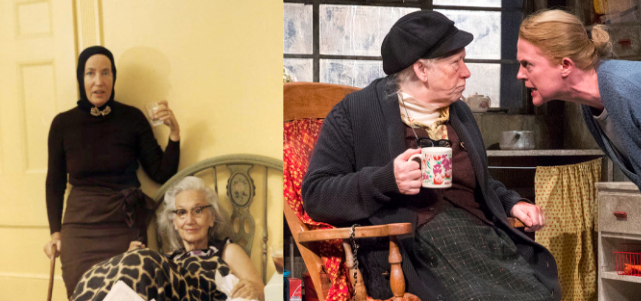
In the same week, my mother and I watched Martin McDonagh’s brooding play The Beauty Queen of Leenane, revived by Druid Theatre Company, who premiered the show two decades prior at the Gorey Theater, while The Wall Street Journal announced that the Grey Gardens estate would be listed for purchase “with an asking price of $19.995 million.” Grey Gardens, a handsome mansion in East Hampton, New York, is forever immortalized with the 1975 documentary that shed light on its lonesome inhabitants—the first cousin and aunt of Jackie Kennedy who lived an existence of squalor among trash, memories, and delusion. In the years that followed, the subjects of the film, Little and Big Edie, became fashion icons and caricatures of spinsterhood—embodiments of the mythic “neighborhood cat lady.” In 2006, Grey Gardens was depicted through a musical, then an HBO special; the combination of behavior indicative of dissociation, thick accents, and a maternal bond that functioned more like bondage, proved to be incredibly engaging material to audiences and a sustained commercial success for entertainment mediums. While sitting at my desk at the HowlRound office, I couldn’t help but draw parallels between both spectacles, despite the fact that only one of them is fictional.
The Beauty Queen of Leenane revolves around the relationship between a mother and daughter who both constantly exchange roles of abuser and abused. Marie Mullen actualized this transaction of injustice when director Garry Hynes approached her with the proposition of playing Mag, the mother, in Druid’s revival of the 1996 original in which Mullen played Maureen Folan—the daughter. The production was hinged entirely on Mullen accepting the role, confides Hynes in her interview with Ramona Ostrowski, Associate Creative Producer of HowlRound. And for good reason too: so much of the show implies an inheritance of dysfunction from parent to offspring. To cast the actress playing Mag as a former Maureen is perfectly consistent with the play’s central theme of generational misfortune—as well as the final tableau of Maureen sitting in her mother’s rocking chair.
The Tuesday following the performance I attended, HowlRound Director Dr. P. Carl organized a visit by Marie Mullen to the Emerson dramaturgy class he teaches. Fortunately, I was able to take Carl's course alongside my internship for HowlRound. I had an opportunity to ask some of the questions haunting me since the show. Mullen is generous, and spoke of the characters in Beauty Queen as though she was contemplating a friend who died long ago, with enough time settled to relieve the departed of any past grievances.
In response to my question of how each woman relates to their own unique solitude, Mullen remarked:
They were always on the outside somehow, both of them. The older you get, the more your world gets narrowed, somewhat. And I think all [Mag] wants to ensure is that Maureen is there to look after her, give her, her needs. Her only connection to the world is Maureen…You don’t get a sense of [Mag] ever going anywhere else, you know, or being part of a community like the others are.
Living on the side of a mountain in rural Ireland instead of the lap of New England old money, Mag and Maureen coexist in a home of isolation and dysfunction. This home…unites a mother and daughter in a trinity of dilapidation.
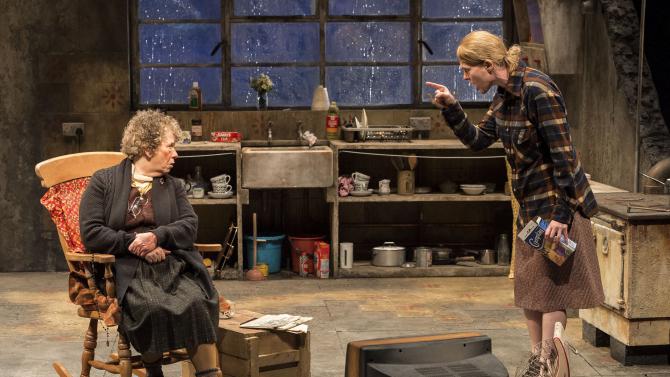
Living on the side of a mountain in rural Ireland instead of the lap of New England old money, Mag and Maureen coexist in a home of isolation and dysfunction. This home, whether in Connemara or the Hamptons, unites a mother and daughter in a trinity of dilapidation—perpetuating patterns of misery by insuring comfort and convenience, while keeping out any threat to that ecosystem of hate.
The show’s design team seems fully aware of this omniscient character that goes unacknowledged by the script—the monster house—and so is everyone else. In the blackouts between scenes, two red beady eyes peek through the darkness, revealed in the light to be various electrical outlets scattered throughout the kitchen and living room. Those red stares induce a certain "you-are-not-welcomed-here" animosity towards us as spectators; they also animate the house into an active witness to the actions of the play, as well as to our own reaction. Toni Morrison’s Beloved springs to mind: the novel begins with a mother and daughter living as hostages under the despotic rule of a dead baby’s ghost. This spirit floods the house in a “red sad light,” while inciting turmoil and pushing characters to the brink of insanity.
According to Mullen though, lethargy and familiarity were two central obstacles the new production wrestled with:
[The audience’s response to the original production] was very reserved, which is not something we experience now. And I can feel, because I’ve been involved in it for twenty years or so, I can feel the difference. They’re much more immediate, [today’s] audience is. Twenty years ago, it was a little slower, because it was really part of the real psyche, whereas now it is more of a classic. It has that distance, and its’ kind of gone into the classic range much more so. It’s not quite giving you images of the Ireland as it is today.
Fast, icy repartee between the two actors, studded with moments of uneasy silence, proved to be the solution. As opposed to physicalizing a “lump,” as Mullen’s predecessor Anna Manahan chose as a tactic to ensure priority in Maureen’s life, Mullen’s excitable and childlike Mag begs for the attention she feels she deserves. Mullen isn’t stapled to the rocking chair for the entire show, for example. Aisling O’Sullivan as Maureen also varies her methods, and frequently makes a boxing ring of the set. The pair do a fantastic job in finding buoyancy in a text saturated in cruelty by not meditating on the stings. The audience finds itself laughing at some very gruesome comments; the plot’s descent into nightmare is starker without recognizing the true intent behind Maureen’s digs until it is too late.
This relationship is not new to the American theatre: the humiliating irony of old age and the great reversal in caregiving has been scrutinized by playwrights like William Inge, Marsha Norman, Tracy Letts, and—of course—Shakespeare in King Lear. McDonagh even follows strict tragic procedure reminiscent of the Bard when he chooses to overshadow a potential wedding (that of Maureen and Pato) with a death. But not that of a lover. Er—somewhat. Somewhat because that lover reveals herself to be so unlovable and undeserving of love by others and by us that she might as well be dead. Which is exactly what Maureen does when she consciously, in a letter to Pato, trades the “Hello” in “The Beauty Queen Says Hello,” for a conclusive “Goodbye.”
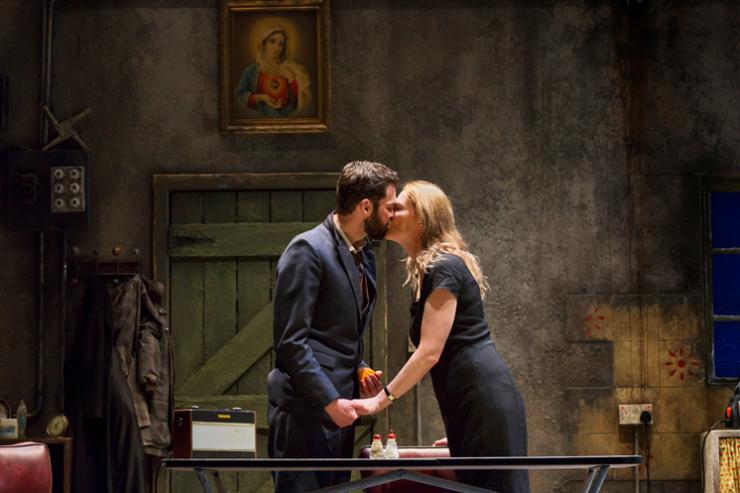
Maureen deserves a chance at love and when that chance comes, you want to give it to her. It is a world that she deserves, and everybody in the audience yearns for her to have it…You think she’d be different.—Marie Mullen
And that is the most tragic of all, really—that our mechanisms of protection from a love that might hurt were correct in their initial establishment. Pato's invitation for Maureen to follow him to Boston was an empty gesture, no matter the perceived honesty in that gesture. Sometimes those manifestations of escape are as hollow and illusionary as the utopias we convince ourselves that they will transport us to. The narrative of Beauty Queen is made even more striking when considering the fact that Boston is understood to be Maureen’s only escape from mental instability:
MAUREEN: To Boston. To Boston I’ll be going. Isn’t that where them two were from, the Kennedys, or was that somewhere else, now.
Yet the Edies of Grey Gardens have lived for generations in America as descendants of the Isles and in-laws of the Kennedys, far above the financial difficulties that plague Beauty Queen’s migrant workers. And they still display worrisome signs of psychosis. As Dr. Carl so stoutly put it: “maybe there really is no escape.”
And how can we not, when discussing age and the disadvantages of experience in our pursuit of love, recount its most famous tragedienne: Blanche DuBois. In the severity of the kitchen light Maureen turns on with a violent yank of a chain, Blanche's paper lamp from A Streetcar Named Desire materializes. In the presence of its crude light, "the light of the axe" to borrow from Hélène Cixous, Maureen is revealed to us in her full murderousness. It’s the same lightbulb Maureen yanks off when sharing an intimate moment with Pato, and the same one she yanks on to better see to the task of torturing her mother.
The last question Marie Mullen answers is if any conversation was had during the rehearsal process around mental illness:
We did talk about [possible diagnoses] because it’s very crucial… in the context of the text. The one thing I never got answered by Garry [Hynes] or Martin [McDonagh] was “did Mag think [Maureen] was insane?”—because there was no place to go. We all have to have a chance at love, Maureen deserves a chance at love and when that chance comes, you want to give it to her. It is a world that she deserves, and everybody in the audience yearns for her to have it…You think she’d be different.
Both shows, Beauty Queen and Streetcar, bring about an essential question: when exactly do we forsake our protagonists in their quest for love? How far along their path of destruction must they go before those opportunities are dashed in our eyes? And how desperate must we be for love before we compromise our chances in truly finding it? If Maureen can tell us anything, the answer is late. Very late.

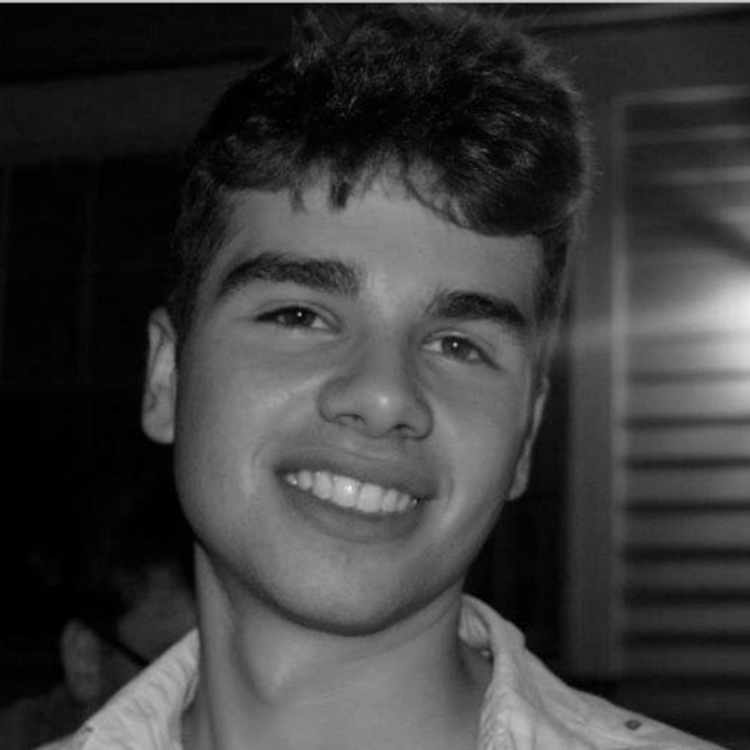
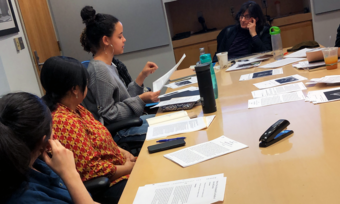


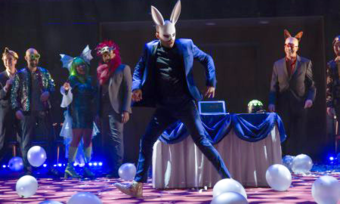

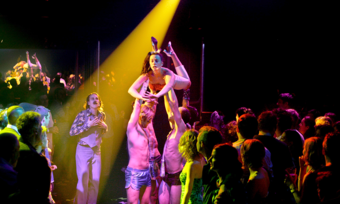

Comments
The article is just the start of the conversation—we want to know what you think about this subject, too! HowlRound is a space for knowledge-sharing, and we welcome spirited, thoughtful, and on-topic dialogue. Find our full comments policy here
So insightful, intelligent, and so well-written.